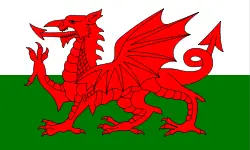Difference between revisions of "Mythical creature" - New World Encyclopedia
| Line 21: | Line 21: | ||
* Conway, D.J. 2001. ''Magickal Mystical Creatures: Invite Their Powers Into Your Life''. Llewellyn Publications. ISBN 156718149X | * Conway, D.J. 2001. ''Magickal Mystical Creatures: Invite Their Powers Into Your Life''. Llewellyn Publications. ISBN 156718149X | ||
* Nigg, Joe. 1995. ''Wonder Beasts: Tales and Lore of the Phoenix, the Griffin, the Unicorn, and the Dragon'' Libraries Unlimited ISBN 156308242X | * Nigg, Joe. 1995. ''Wonder Beasts: Tales and Lore of the Phoenix, the Griffin, the Unicorn, and the Dragon'' Libraries Unlimited ISBN 156308242X | ||
| + | * Nigg, Joe. 2001. ''The Book of Dragons & Other Mythical Beasts''. Barron''s Educational Series. ISBN 0764155105 ISBN 978-0764155109 | ||
| + | * Nigg, Joseph. 1999. ''The Book of Fabulous Beasts: A Treasury of Writings from Ancient Times to the Present''. Oxford University Press, USA. ISBN 0195095618 ISBN 978-0195095616 | ||
Revision as of 23:12, 24 February 2007
A legendary creature is a mythological or folkloric creature (often known as "fabulous creatures" in historical literature). Some — such as the dragon or the griffin — have their origin in traditional mythology and have at one time been believed to be real creatures. Others were based on real creatures, originating in garbled accounts of travellers' tales; such as the Vegetable Lamb of Tartary, which supposedly grew tethered to the earth (and was actually a type of fern). The traditional unicorn may have come from garbled stories about the rhinoceros and/or narwhal. Examples of the legendary creatures can be found in medieval bestiaries.
Conversely, some creatures downplayed as just storytelling, have been rediscovered and found to be real in recent times, such as the giant squid.
Often mythical creatures are chimeras, a combination of two or more animals. For example, a centaur is a combination of a man and horse, a minotaur of a man and bull. It should be noted that these were not always intended to be understood as literal juxtapositions of parts from disparate species. Lacking a common morphological vocabulary, classical and medieval scholars and travellers would attempt to describe unusual animals by comparing them point-for-point with familiar: the giraffe, for example, was called cameleopard, and thought of as a creature half-camel, and half-leopard.
Many legendary creatures appear prominently in fantasy fiction. These creatures are often claimed to have supernatural powers or knowledge or to guard some object of great value, which becomes critical to the plot of the story in which it is found.
Many legendary creatures have been incorporated into heraldry and architectural decoration. Legendary creatures have also been accepted into many facets of popular culture most notably in fantasy role playing games such as Dungeons & Dragons or Everquest, video games, Hollywood movies and power metal bands (such as DragonForce)).
ReferencesISBN links support NWE through referral fees
- Conway, D.J. 2001. Magickal Mystical Creatures: Invite Their Powers Into Your Life. Llewellyn Publications. ISBN 156718149X
- Nigg, Joe. 1995. Wonder Beasts: Tales and Lore of the Phoenix, the Griffin, the Unicorn, and the Dragon Libraries Unlimited ISBN 156308242X
- Nigg, Joe. 2001. The Book of Dragons & Other Mythical Beasts. Barrons Educational Series. ISBN 0764155105 ISBN 978-0764155109
- Nigg, Joseph. 1999. The Book of Fabulous Beasts: A Treasury of Writings from Ancient Times to the Present. Oxford University Press, USA. ISBN 0195095618 ISBN 978-0195095616
External links
Credits
New World Encyclopedia writers and editors rewrote and completed the Wikipedia article in accordance with New World Encyclopedia standards. This article abides by terms of the Creative Commons CC-by-sa 3.0 License (CC-by-sa), which may be used and disseminated with proper attribution. Credit is due under the terms of this license that can reference both the New World Encyclopedia contributors and the selfless volunteer contributors of the Wikimedia Foundation. To cite this article click here for a list of acceptable citing formats.The history of earlier contributions by wikipedians is accessible to researchers here:
The history of this article since it was imported to New World Encyclopedia:
Note: Some restrictions may apply to use of individual images which are separately licensed.
